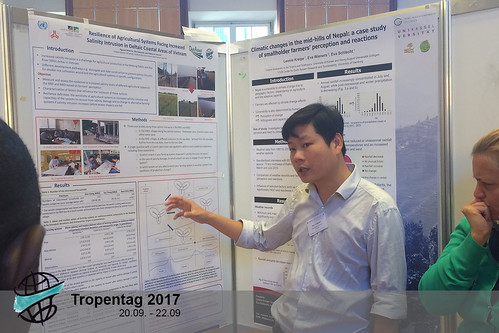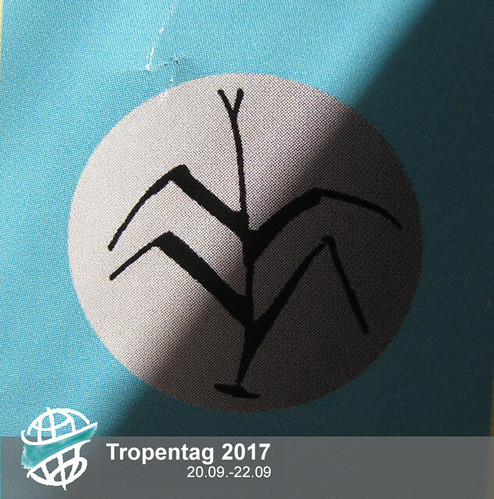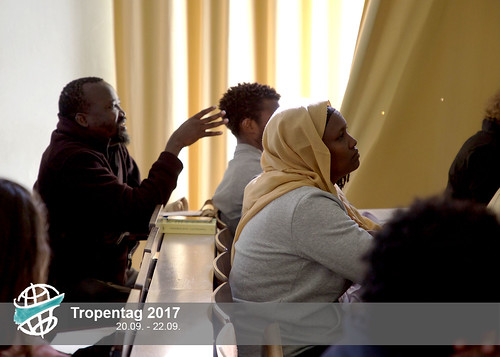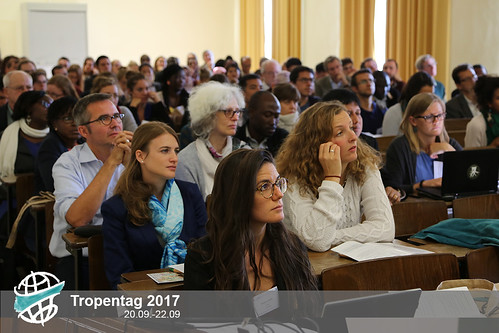Blogs
Young Scientists Work to Make a Healthier Soil
Thu, 09/21/2017 - 14:38 — mustamin.fadliAt the first oral presentation on soil and soil fertility today there were five young scientist presenting their work. I found two very interesting. Steffen Werner from the University of Bochum tried to answer if urban agriculture can contribute to food security by reducing nutrient losses. His two years work in Ghana used biochar and water irrigation to reduce nutrient losses. Urban and peri-urban agriculture is characterized by higher input and soil degradation. Excessive use of mineral fertilizer can lead to losses of nutrient through leaching.
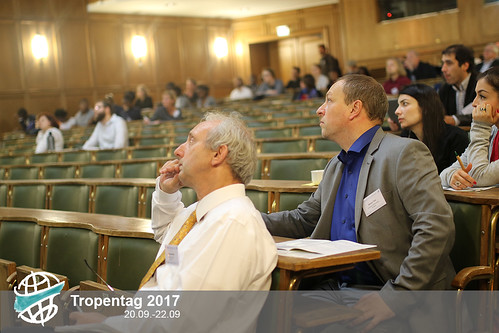
However, his results still showed increased nutrient leaching, especially of N, P, Ca, Mg, and Na. He suggested more appropriate irrigation, because that proved effective in lowering leaching .
Irabella Thiemann from the University of Bonn tried to find out if flow paths in maize-paddy rice cropping system can be a hotspot for nutrient cycling. Maize-paddy rice cropping systems consume less water during the dry season. Changing systems from maize to rice led to desiccation cracks in the soil. Her research studied the role of this crack, where anaerobic conditions lead to methane emissions.

Diverse Approaches to Understanding Farmers’ Perception
Thu, 09/21/2017 - 14:19 — Hana KhanhStarting very early in the morning of the second day of Tropentag 2017, the poster sessions on Risk and Awareness still attracted many people. It is good news that this year many presented research focused on understanding the farmers’ perception through different approaches. It also made the session more interesting with lots of discussions.
While Akary Min investigated how farmers adapt to climate change in the Central Dry Zone of Myanmar, Amie Heri-Kazi Bisimwa from Eastern of DR Congo was more inclined towards the farmers’ perceptions of land degradation in South Kivu. And Minh Tu Nguyen has been currently working on the subjective measurement of resilience of agricultural systems to increased salinity intrusion in Vietnam. More surprisingly, Emily Mutota tried to apply a new method, ‘’photovoice’’, in which she attempted to understand the perception of the local community about their own habitats by asking them to expressing it through the photos they captured. Even though, personally, I was not able to find many promising results from this research, her attempts with a new approach should be appreciated.

Better in the Ground than in the Freezer
Thu, 09/21/2017 - 14:13 — marlemkeWhile Global Crop Diversity Trust, as pointed out by Elena Popova in her oral presentation, accumulates more than 757, 000 seeds in their “Nordic gene bank” (NordGen) in Norway, a US$ 9 million project, smallholder farmers from all over the world simply cultivate grow theirs in the form of landraces to sustain themselves.
I believe we have to critically evaluate this development. On one hand, it’s good to have this reservoir of different crop plants and more than 80.000 seeds are distributed to farmers in 157 countries in the global South from the seed banks. On the other hand, resistance traits related to climate change such as drought tolerance and water logging don’t develop over night – and still less in a seed bank, possibly decades being stored there.
We need more biodiversity, but in the fields, not in the refrigerator.
Where Does the Water Go?
Thu, 09/21/2017 - 13:25 — kristianj71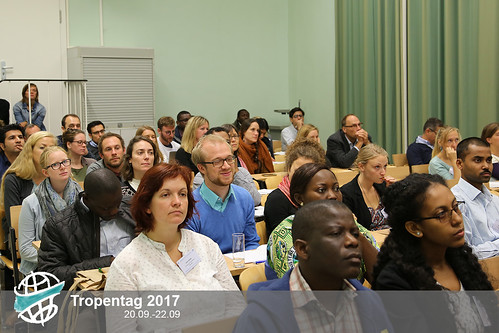
You have to throw caution to the wind when you walk into the oral or poster sessions. You never know what you are going to get.
The "Water and Irrigation" oral presentations ranged from brave, young newcomers exposing their masters’ theses to the world, to veterans summarizing already published work. Here, as in most disciplines this conference, modeling has assumed a large role. After the session, I grabbed Dr. Giese from the University of Hohenheim, who pointed out though that, while part of the future of agricultural science, there were significant constraints due to limited available data. After all, without any connection to the real world, models have little relevance.
Limitations to Moving Forward
Thu, 09/21/2017 - 13:15 — megreslerHalfway through Day 2 of Tropentag 2017, limitations to productivity seem to be a recurring theme across many disciplines.
Bulle Dabasso, from the University of Nairobi, described to his audience a bottleneck in economic potential, the limited market value of lean animals in Kenya. His study provided a detailed description of Stratified Cattle Production (SCP) as an option for improving market value for lean animals, therefore increasing the economic potential of pastoral livestock production in Kenya. Debasso's explanation of the necessity of addressing this bottleneck seemed relevant in the context of his research, but I was left desiring further exploration of the social and ecological limitations which almost certainly also work to impede productivity.
Certainly, I'm not the only one. Is it not fair to say that research in #FutureAgriculture must consider not only the economic limitations of moving towards productivity transformation, but also the ecological and social limitations embedded within context-specific research?

Tropentag Poster Session Diary
Thu, 09/21/2017 - 13:14 — marlemkeAs such, we want to know how nature behaves. We want to mimic it, and often we want to be in control of it. We sometimes fight it, and sometimes cooperate with it.
We experiment with biological agents such as fungal isolates to fight root-knot nematodes on pineapple plantations in Kenya to avoid unnecessary pesticide use. Or we compare a conventional single-culture cacao cropping system with a agroforestry system, a natural, resilient system that copes with rapid changing abiotic factors due to climate change. Of course, we don't want to deal with the origins of the problem, which are usually man-made. What about reducing waste? Rethinking nutrition? Learning to make do with less? Ultimately, we all strive for the same: living our dreams.
We Need Youth! Small mechanization to preserve Moroccan Oases
Thu, 09/21/2017 - 13:03 — giulia.rotanodariFor centuries, oases supported agriculture and sustained livelihoods in arid climates. Over the last few decades, oases in Morocco have been progressively neglected. They are fragile ecosystems and without constant care from the next generation, are facing progressive degradation. Date palms are one of the most important resources in an oasis, but as a consequence of the progressive land abandonment, the loss of knowledge and labour force are hindering its production.
The University of Florence, in collaboration with the University of Moulay Ismail and ICARDA, proposed the introduction of small machines as a possible solution to reduce the drudgery of farm work, facilitate field operations, and make agriculture more attractive for the young farmers.
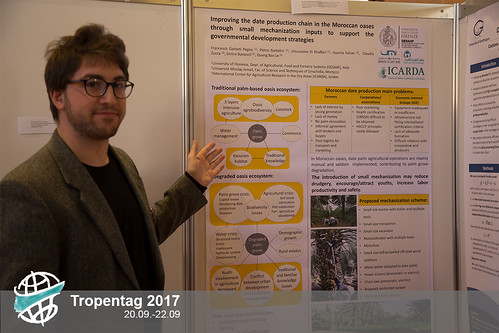
However, Pietro Bartolini explained that the main limitations may be linked to access, in fact the investment cost is often not affordable for smallholders. For this reason, the proposed intervention will target local cooperatives, in order to ensure a better economic sustainability.

In Ghana, It's all About Standards
Thu, 09/21/2017 - 12:58 — Hana KhanhAmong the six presentations during the "Markets" oral sessions this morning, Nkoyo Bassey from the University of Bonn caught lots of attention. Her work promised to bring many benefits to farmers in Ghana by applying quality grading standards for maize to reduce post-harvest loss (PHL).
In her research "Marketers Consciousness for Quality Loss Reduction: A Case from Maize Marketers in Ghana", Nkoyo Bassey and her team experimented and analysed the influences of establishing a standard grading system for the quality of maize produced by farmers in two districts in the Brong-Ahafo region of Ghana. Until now, the quality of harvested maize grains was decided mostly subjectively according to its physical appearance by farmers and buyers. Therefore, there is an increased possibility of losing certain amounts of usable grain, which costs the farmer. By comparing the existing scenario of current market situation on subjective grading and the hypothesized scenario with grading systems, her research found out a significant impact of grading standard. While the former scenario showed a low acceptability of marketers (around 44%), the latter one clearly confirmed the benefit of grading scale with a double rate of acceptance.





